Beatrice Alexander
Institution: William Alexander Birnbaum
"You need to believe in people's dreams, especially women's."
"Madame" Beatrice Alexander knew how to dream big. Born into a world in which many women worked but few achieved prominence in business, she built her own company virtually singlehandedly. Raised amidst teeming poverty, she amassed a significant fortune. From the obscurity of an immigrant neighborhood, she became one of the foremost female entrepreneurs of the twentieth century.
Women have always participated in business endeavors, but until recently most did so as members of a family unit. Alexander, by contrast, was the driving force behind her firm, the Alexander Doll Company, and she owed her position not to her husband or her extended family but to her own efforts and skill. Over the years, her hard work, innovative ideas, and instinctive business acumen enabled her to overcome many hurdles common to both the business world in general and women entrepreneurs more specifically.
Although Alexander's successes took her far from the Lower East Side immigrant world of her childhood, she never lost sight of those less fortunate than she. She donated substantial sums to both Jewish and non-Jewish organizations in Israel and in the United States, and she was a committed Zionist throughout her life. As a pioneering businesswomen and a generous philanthropist, Beatrice Alexander demonstrated to the world at large what a woman with drive, creativity, ambition, and a benevolent heart could accomplish.
Immigrant Roots
The woman who would become known as "Madame Alexander" was born in Brooklyn, New York, on March 9, 1895. She was named Bertha but later adopted the more sophisticated "Beatrice."
Alexander's mother, Hannah Pepper, was born in Austria but arrived in the United States from Russia, where she had escaped vicious pogroms. Shortly thereafter, she met and married Maurice Alexander, who had left his native Odessa as a young man and spent several years as an apprentice in Germany before coming to America.
According to some of Alexander's descendents, Hannah was already pregnant with Beatrice when she came to the United States, after her first husband and older children died in a pogrom in Russia. Others believe that the couple came together to New York and that the husband died when Beatrice was about a year and a half old. Regardless, Beatrice adored her step-father Maurice and always considered him her real father.
Beatrice and her sisters Rose, Florence, and Jean grew up on Grand Street on the Lower East Side, in the heart of New York's teeming immigrant community. Poverty was often extreme in this neighborhood, where a myriad of different languages and different cultures existed side by side. Like most of their neighbors, Hannah and Maurice had come to the United States filled with expectations, and they had even higher hopes for their children's future than they did for their own. The Alexander girls were encouraged to work hard, do well in school, and aim high.
Notes:
- Stephanie Finnegan, et. al., Madame Alexander Dolls: An American Legend (Portfolio Press, 1999).
The Doll Hospital
Alexander recalls the beginnings of her father's doll hospital, 1978.
Alexander's association with dolls began the year she was born, when her step-father opened the United States' first Doll Hospital. Before the invention of plastic, most dolls were made of china and were highly breakable; by restoring their shattered dolls to health, Maurice earned the gratitude of countless children. "I remember a father coming in the middle of the night because his little girl was sick and had broken her doll and needed it right now—a difficult task when the poor doll's head was shattered into dozens of pieces," Beatrice said in 1983.
The contrast between the wealth of many of Maurice's customers and the poverty of the neighborhood made a deep impression on the young Beatrice, and like many other children of immigrants, she became highly motivated to achieve a better future. "When I was 11 or 12," she remembered, "I realized that there were poor people and there were rich people, and I leaned towards the rich. I wanted to have a carriage and a hat with ostrich feathers." Hannah assumed her daughter would achieve these goals by "marry[ing] well" and joked that it would take three husbands to support Beatrice in the manner she desired.
Alexander's early surroundings also accustomed her to seeing women working at least as hard as men. Because few immigrant families could afford to conform to middle-class ideals of leisured ladies, the mothers and older sisters of most of Beatrice's playmates would have contributed to the family income. If they did not work outside the home, then immigrant women helped in family businesses, took in boarders, or did piecework in the home. Beatrice's own mother worked with her husband in his shop, as well as having full responsibility for the home. "I can truthfully say," Alexander asserted, "that my mother worked harder than my father."
Notes:
- Biographical information from Stephanie Finnegan, et.al., Madame Alexander Dolls: An American Legend (Portfolio Press, 1999).
- Quote beginning "I remember..." cited in Catherine Calvert, "Madame Alexander: Dolls and Dreams," Town and Country, December 1983: 46.
- Quote beginning "When I was 11 or 12..." cited in Krystyna Poray Goddu, "A Personal Profile: Madame Alexander," Dolls: The Collector's Magazine, November 1988: 59.
- Story about "marrying well" from "Madam Alexander and her Dolls," Palm Beach Times, March 6, 1970.
- Quote beginning "I can truthfully say..." from Madame Beatrice Alexander Oral History, 1982, in the William E. Wiener Oral History Library of the American Jewish Committee, American Jewish Women of Achievement series, at the Dorot Jewish Division of the New York Public Library, 3.
Career Beginnings
Beatrice Alexander's recollection of making her first dolls shortly after the beginning of World War I, 1978.
On June 30, 1912, a few weeks after serving as valedictorian for her high school graduation, Alexander married Philip Behrman. While Philip worked in the personnel department of a hat factory, Beatrice took a six-month commercial course and then worked as a book-keeper for the Irving Hat Stores. In 1915, she gave birth to a daughter, Mildred, in what she would later refer to as "the happiest moment of [her] life."
World War I, which broke out two years after Beatrice and Philip's wedding, changed Beatrice's future dramatically. While untouched by the immense physical destruction of the "Great War," the United States was not immune to the massive economic disruption of the war. Many of the dolls that filled Maurice Alexander's shop and hospital came from Germany, and Hannah and Maurice's livelihood was soon threatened by Allied embargoes of German goods.
Beatrice and her sisters, determined not to allow their parents' business to fail, quickly decided to produce homemade dolls for sale. Beatrice—recalling the despair of the young customers of the Doll Hospital, and in any case deprived of more exotic materials—proposed that they make a cloth doll. Inspired by the women involved in the war effort, she chose a Red Cross Nurse for her model. Under Beatrice's exacting but effective direction, the Alexander sisters gathered around their parents' kitchen table to sew the dolls, which then flew off the shelves of Maurice's store and saved the family business.
Notes:
- Biographical information from Stephanie Finnegan, et. al., Madame Alexander Dolls: An American Legend (Portfolio Press, 1999), and Madame Beatrice Alexander Oral History, 1982, in the William E. Wiener Oral History Library of the American Jewish Committee, American Jewish Women of Achievement series, at the Dorot Jewish Division of the New York Public Library.
- Quote about "happiest moment" cited in Krystyna Poray Goddu, "A Personal Profile: Madame Alexander," Dolls: The Collector's Magazine, November 1988: 60.
The Alexander Doll Company
Beatrice Alexander discusses her entrepreneurship, and recalls her 1923 move into business for herself, 1978.
In the years immediately following World War I, the Alexander sisters continued to produce dolls for their parents' shop. They supplied what the European doll industry—battered by years of war—could not. Beatrice discovered that she enjoyed the work. It fulfilled her artistic inclinations, and she was an efficient manager. She also needed a distraction after the loss of a second baby in a Spanish Flu epidemic. In 1923, she decided to formalize her doll-making operations, and with a $1600 loan, she created the Alexander Doll Company.
Hiring neighbors to help her sisters sew cloth dolls, Alexander sold her first "Alice in Wonderland" dolls for $14.40 a dozen wholesale. When stores protested that the $1.95 retail price did not allow enough of a profit, she lowered the price to $13.50 a dozen. Barely breaking even, she worried her company would not succeed. "I was desperate, discouraged," she later admitted. "I wanted to run away, but by then I had employees, sixteen people who depended on me." In the late 1920s, a burst water tower almost destroyed the company. Alexander's mother saved the day: after carefully drying the dolls and their clothes, she held a "water sale" and sold the entire inventory at a huge discount, bringing in just enough to keep the business alive.
Alexander had to fight to be taken seriously as a businesswoman, for bankers often saw women as poor credit risks and retailers tried to take advantage of them. But she skillfully manipulated people's assumptions for her own benefit. Firm when necessary, she flirted when it would help her cause. She also brought along her daughter to meetings to heighten loan officers' sympathies for a struggling young mother. When a sympathetic banker granted her a much-needed loan but clearly did not expect her to repay it, Alexander vowed to repay the entire sum early. "I wanted to teach him a lesson," she said. "You need to believe in people's dreams, especially women's."
Notes:
- Biographical information from Stephanie Finnegan, et. al., Madame Alexander Dolls: An American Legend (Portfolio Press, 1999).
- Information about second child from "These Dolls are So Real They Seem to Have Souls," Boston Herald, August 11, 1967; "Madam Alexander and her Dolls," Palm Beach Times, March 6, 1970. Some articles identify the child as a boy, others as a girl.
- Information about Alice in Wonderland dolls from John Axe, "Exclusive Doll Reader Interview with Madame Alexander," Doll Reader, April 1984: 87-88.
- Quote beginning "I was desperate..." cited in Catherine Calvert, "Madame Alexander: Dolls and Dreams," Town and Country, December 1983: 56.
- Quote beginning "I wanted to teach him a lesson..." cited in Finnegan, 21.
A Shrewd Businesswoman
In the mid-1920s, realizing she needed someone she trusted to help her manage the firm, Alexander asked her husband to quit his job. Philip was nervous about making the family's entire financial future dependent on an unproven business, but Beatrice threatened to divorce him if he refused. "I meant it," she later asserted. "It seem[ed] to me I [could] always get another man." Philip finally agreed and worked alongside his wife until his death in 1966.
By the late 1920s, Beatrice had taken on a new identity as "Madame" Alexander. Although accounts differ as to how she received the designation "Madame," the name appealed to her longstanding dreams of refinement and sophistication. It also heightened the sense of elegance that already surrounded Alexander's high-quality dolls.
Just as it was finally getting on its feet, the Alexander Doll Company faced another difficult hurdle: the Great Depression. Enough people found that the fantasy world of dolls provided an escape from the adversity of the time, however, that the business survived, and even began to thrive.
Alexander had a keen instinct for what would increase the sale of her dolls. In 1933, she pioneered the practice of movie tie-ins, reissuing her Alice in Wonderland and Little Women dolls to coincide with film versions of the books. Her greatest movie coup occurred in 1936, when she created a Scarlett O'Hara doll that looked just like Vivian Leigh, two years before Leigh auditioned for "Gone With the Wind."
Alexander also kept a sharp eye on public events for potential models. When the world's first surviving quintuplets were born in Ontario, Canada, in 1934, she knew immediately that Dionne quint dolls would be wildly popular, and the Alexander Doll Company quickly secured the license to produce them. The Company followed the children as they grew, and it was these dolls that truly brought Alexander Doll to the forefront of the toy world.
Notes:
- Quote beginning "I meant it..." cited in Krystyna Poray Goddu, "A Personal Profile: Madame Alexander," Dolls: The Collector's Magazine, November 1988: 60.
- Information about development of Alexander Doll Company from Stephanie Finnegan, et. al., Madame Alexander Dolls: An American Legend (Portfolio Press, 1999).
Expecting the Best
Alexander managed her business with meticulous care. As the Company expanded, she maintained the high standards she had set for her sisters when they sewed the first Red Cross Nurse. "If a child plays with a doll put together poorly," she said, "dressed with pins and poor stitching, she is apt to...become a woman who reaches for a pin instead of a needle in later life."
"You never knew when she would suddenly get it into her head to take a walk on the factory floor," says Alexander's long-time secretary. "I guess you could say she was conducting spot inspections. She demanded the best from everyone who worked beside her because she demanded the best of herself... If she saw lace on a hem that seemed to be frayed or uneven, she would complain and demand that it be fixed immediately. It wasn't nit-picking; she was the quality control of the whole company." The care with which Alexander oversaw operations ensured that her dolls always retained their reputation for quality. She maintained the same exacting attention to detail in all of her business endeavors.
Alexander was a demanding employer, but she was also fair. Long-time employee Greta Schrader remembers her as direct and to-the-point—she "called a spade a spade"—but also as polite, amenable to suggestion, and truly caring about her workers. Her employees worked year-round, unlike those at other doll factories, and Alexander paid bonuses twice a year. Despite the lower labor costs abroad, she was adamant at keeping production in the United States; by the 1980s, hers was the only American doll company that did not manufacture any part of its dolls outside the country. Alexander was also committed to the local community, making significant contributions to local organizations and refusing to leave her Harlem location. Her workers rewarded her with loyalty, some over several generations.
Notes:
- Quote beginning "If a child plays..." cited in Jo
Elizabeth Gerken, "Madame, We Thank You," newspaper clipping
from Archives of Alexander Doll Company, Inc. - Quote beginning "You never knew..." cited in Stephanie
Finnegan, et. al., Madame Alexander Dolls: An American
Legend (Portfolio Press, 1999), 16. - Conversation with Greta Schrader, Alexander Doll
Company, Inc., May 8, 2000. - Information about employment practices from John Axe,
"Exclusive Doll Reader Interview with Madame Alexander,"
Doll Reader, April 1984: 89; John Axe, "Doll Reader
Interview at the Alexander Doll Company Factory," Doll
Reader, November 1983: 100; Sandi Cushman, "They're real
dolls, and you can't beat that these days," Daily
News, November 5, 1974.
An Innovative Designer
Alexander excelled at the design of her dolls. "I didn't want to make just ordinary dolls witih unmeaning, empty smiles on their painted lips and a squeaky way of saying 'mama' after you pinched," she said. "I wanted to do dolls with souls. You have no idea how I labored over noses and mouths so that they would look real and individual." To ensure that the dolls' costumes were scrupulously accurate, she returned time and again to the New York Public Library in search of authentic representations of other times, places, and cultures. Her attention to detail was prodigious; even the dolls' petticoats were full and lace-trimmed.
Standing at the forefront of innovation in doll-making, Alexander experimented constantly to make her dolls more attractive, more lifelike, and more marketable. Dissatisfied with the stiff, flat faces of her cloth dolls, she developed techniques to sculpt in fabric, achieving lively, realistic facial features. Sleep eyes, rooted hair, and walking dolls were among the novelties that emerged from her factory. Having moved from cloth to a new composition material in the 1920s, immediately after World War II she was among the first toy makers to use the new material of plastic, which finally allowed her to fulfill her dream of creating an unbreakable doll.
Notes:
- Quote from "The Amazing Doll Designer," The Toy Manufacturer, September 1962: 8.
Milestone Creations
By the early 1950s, Alexander's reputation earned her a challenging commission: the department store Abraham & Straus asked her to produce dolls representing the coronation of Queen Elizabeth II. After lengthy research and consultation with the British Museum of Costume, Alexander created a 36-doll set that included the queen, maids of honor, archbishops, choir boys, royal relatives, and honor guards. She purchased cloth from the same mill that manufactured the real coronation robes and insisted upon authenticity even for unseen undergarments. The resulting set—valued in 1953 at $25,000—was so accurate that CBS used it to recreate the coronation on television. Thousands flocked to see it on display.
Two years later, Alexander created a stir when she debuted Cissy, the first full-figured high-heeled fashion doll, four years before Barbie entered the world. "For three years we kept that one back," she later said. "We were afraid of the D.A.R. and other women's groups." And perhaps the fear was justified: "In her black lace chemise or white lace covering over her pink body, the buyers [at the toy fair] ogled her ecstatically and I had to convince them it wasn't meant for a peep show," she commented with disgust. "I was seriously introducing fashion" to young girls.
Notes:
- Information about Coronation dolls from Stephanie
Finnegan, et. al., Madame Alexander Dolls: An American
Legend (Portfolio Press, 1999). - Quote beginning "For three years..." cited in "She
put fashion in the dollhouse," Business Week,
December 24, 1966: 61. - Quote beginning "In her black lace chemise..." cited
in Vivian Brown, "Dolls for the Bicentennial," Titusville
Herald, March 25, 1975.
Doll Philosophy
Madame Beatrice Alexander describes her ideas about the value of dolls, 1978.
Alexander believed strongly that, more than simple playthings, dolls were tools that could stimulate children's minds, emotions, and imaginations."Dolls," she said, "should contribute to a child's understanding of people, other times and other places. Dolls should develop an appreciation of art and literature in a child." They could also help children learn how to relate to others.
With these goals in mind, Alexander chose her subjects carefully. As a child, she herself had often escaped the drabness of everyday life by immersing herself in poetry and novels, and she returned to literature in search of characters she believed could act as effective teaching tools. History, the arts, fashion, and the cultures of the world also provided her with inspiration. From Romeo and Juliet to Cinderella, southern belles to Chinese children, outrageous flappers to demure ladies, Alexander's creations delighted young and old alike.
Wanting the child to remain the active participant in play, Alexander avoided gimmicks and mechanical devices in her dolls. "I never do mechanical dolls," she said. "I don't make dolls that dance, walk or talk. I think that the child is the one who should be inspired to do things with the doll. Dolls can bring out the creative instincts in children."
Notes:
- Quote beginning "Dolls should contribute..." cited in Stephanie Finnegan, et. al., Madame Alexander Dolls: An American Legend (Portfolio Press, 1999), 49.
- Quote beginning "As a child learns..." from "Madame Alexander: The Commemorative Album," Music and Lyrics by John Braden ASCAP ©1978
- Quote beginning "I never do mechanical dolls..." cited in John Axe, "Exclusive Doll Reader Interview with Madame Alexander," Doll Reader, April 1984: 89.
Gender and Dolls
Alexander's stance on the suitability of dolls as toys for boys was quite progressive for her time. Although she "would never advocate a mother or father rushing out and buying dolls for boys," she also did not believe that boys would become "effeminate" if they did play with dolls. In fact, she thought dolls could play an important role in fostering boys' natural nurturing instincts. "I don't think a parent should ridicule boys when they show affection for little sister's dolls," she asserted. "After all, the paternal instinct in men is an important as the maternal instinct in women, and it couldn't be good to crush that instinct in a child."
Despite her progressive views, Alexander's relationship to feminism was complex. As a strong, outspoken, self-sufficient woman, she clearly did not conform to traditional ideas about women's roles and characteristics. She encouraged her female employees to be self-reliant and in the early years even brought them to Margaret Sanger's clinic for checkups and birth control. According to her secretary, "Madame Alexander was the original feminist. She was doing a man's job when the world was not always accepting or approving of an independent woman."
Yet with many of her creations apparently encouraging girls to be more concerned with appearance and etiquette than with self-fulfillment, Alexander was forced to respond in the 1970s and 1980s to charges from the growing feminist movement that the doll industry was retrograde and harmful to women. Denying vigorously that her dolls contributed to the oppression of women, she argued instead that they helped to build up a girl's "capacity to love others and herself." The role of dolls—and of toys more generally—in building children's sense of appropriate gender roles remains hotly debated today.
Notes:
- Quotes beginning "would never advocate..." and "I
don't think..." cited in Mary Widener, "Madam Alexander
Turned a Little Cherub into Doll Industry," newspaper
clipping from Archives of Alexander Doll Company, Inc. - Quotes beginning "Madame Alexander was..." and
"capacity to love..." cited in Stephanie Finnegan, et. al.,
Madame Alexander Dolls: An American Legend
(Portfolio Press, 1999), 54.
The First Lady of Dolls
By 1936, only thirteen years after she founded her business, Alexander was "deferred to by all the gallants of the business as the Queen of Dolls," and Fortune magazine listed her as one of the three largest doll manufacturers in the United States. Alexander Doll later became the largest producer of dolls in the nation, occupying several factories and employing 1500 people at its height. In the 1980s, it produced over a million dolls each year; today, it employs six hundred people at one factory in Harlem, where it is the largest private employer.
The high-quality Alexander dolls were dubbed "the Cadillacs of dolldom" by the press. Customers stood in line for hours to buy new creations, and retailers sometimes had to limit the number of dolls a shopper could purchase. "People were desperate to go home with more than one doll," says an associate of Alexander's of an episode in a department store. "[T]hey would lie, beg or even try to steal to get more than one Scarlett. It was truly amazing."
In 1961, admirers formed the Madame Alexander Fan Club (later called the Madame Alexander Doll Club), membership in which eventually reached 12,000. Although Alexander often said that "nothing [gave her] more satisfaction than to see a child playing with [her] dolls," many of the dolls became collectors' items. Alexander dolls now reside in private collections and museums—including the Smithsonian Institution, the Brooklyn Children's Museum, and the Congressional Club—throughout the United States and abroad.
Alexander's achievements were recognized by her colleagues as well as by her customers. In 1951, she won the first of four consecutive Fashion Academy Gold Medals for "the ultimate in design beauty, for encouraging good taste and clothes appreciation, and for symbolizing 'best dressed' so perfectly." In 1986, Doll Reader magazine awarded Alexander its Lifetime Achievement Award, and FAO Schwarz named her the First Lady of Dolls.
Notes:
- Quote beginning "deferred to by..." from "Dolls—Made
in America," Fortune, December 1936: 199. - The Christian Science Monitor referred to
Alexander dolls as "Cadillacs of dolldom"; see Stephanie
Finnegan, et. al., Madame Alexander Dolls: An American
Legend (Portfolio Press, 1999), 41. - Quotes beginning "People were desperate..." and "the
ultimate in design beauty..." cited in Finnegan: 58-59,
43. - Quote beginning "nothing [gave her]..." cited
in draft of John Axe, "Exclusive Doll Reader Interview With
Madame Alexander," in Archives of Alexander Doll Company,
Inc.
A Generous Philanthropist
In 1982, Alexander recalled that the Women's League for Palestine (now Women's League for Israel) had been a crucial factor in her entry into the business world. In the 1920s, she became involved with a group of women who, concerned about the fate of female immigrants to Palestine, founded the League to help provide the immigrants with homes and jobs. For several months, Alexander took money from the household budget to contribute to the League, but eventually her husband confronted her about the unpaid bills.
"I sat in the easy chair all night," Alexander remembered. "I said 'I am not going to stop doing this. I am not going to bed, I would have been asleep for Israel. What can I do where I can be left with fifty dollars a week...? ...That's all I spoke about, 'I must do something to earn money.' I had no trade, I had no profession... All I knew was that I needed a few extra dollars to help those girls in Israel." She decided to start her own doll business to earn money to donate to the League.
As is often the case, the many years between event and recollection left their mark on Alexander's memory. Her decades of dedication to the Women's League—one of its homes in Jerusalem has named a rose garden in honor of her lifelong devotion—probably caused her to overstate its influence on her decision to start her own business; the Women's League was actually founded in 1928, five years after the Alexander Doll Company opened. Nonetheless, Alexander's philanthropic drive was an important motivation over her long business career.
Over the years, Alexander contributed to many Jewish and non-Jewish causes, including the Anti-Defamation League, the Jewish Theological Seminary, Brandeis University, the Harvard-MIT Division of Health Sciences and Technology, and the Einstein College of Medicine. A strong Zionist, she supported the American Technion Society, Women's American ORT, and the American Friends of Hebrew University as well as the Women's League. "I have gained more by my interest in Israel," she maintained, "than Israel has gained by the thousands of dollars I have given."
Notes:
- Alexander discussed her memories of the Women's League in Madame Beatrice Alexander Oral History, 1982, in the American Jewish Committee Oral History Library of the American Jewish Committee, American Jewish Women of Achievement series, at the Dorot Jewish Division of the New York Public Library. See also John Axe, "Exclusive Doll Reader Interview with Madame Alexander," Doll Reader, April 1984: 87.
- Quote beginning "I have gained more by..." cited in Dorey Finn Scott, "Madame Alexander A Living Doll," Palm Beach Daily News, March 7, 1982, A2
Later Years
Alexander remained actively involved with the Alexander Doll Company into her early nineties. She made public appearances for the Company throughout the 1980s, always met by enthusiastic throngs of people. A 1983 visit by Alexander drew record crowds to Walt Disney World, where a special events planner told Alexander that she was "more popular than Elvis."
Alexander's day-to-day participation in the life of Alexander Doll was waning, however. She had ceded control over everyday operations to her son-in-law and grandson, Richard and William Birnbaum, in the 1970s, and she spent increasing amounts of time in her second home in Palm Beach, Florida. There she became involved with a new set of local cultural and philanthropic causes and contributed significant sums of money towards the election of Republican politicians.
In 1988, at the age of 93, Alexander officially retired and sold the Alexander Doll Company to three private investors. She remained nominally as a design consultant, but in actuality the Company had passed from her hands. She died on October 3, 1990, in Palm Beach.
Notes:
- Stephanie Finnegan, et. al., Madame Alexander
Dolls: An American Legend (Portfolio Press, 1999),
59.
Legacy
In the years after Alexander's retirement, the Alexander Doll Company floundered under its new management, despite the production of many new and highly-praised dolls. In 1995, on the edge of bankruptcy, the Company was acquired by the Kaizen Breakthrough Partnership. With new management and production methods, it has regained its footing.
Beatrice Alexander's achievements over a lifetime were prodigious. In an era when high-powered businesswomen were a rarity, she created—virtually single-handedly—a company that became large, profitable, and long-lived. A gifted designer with an unerring eye for what would appeal to her customers, she demonstrated instinctive business acumen. She also contributed significantly to the creation of the American toy industry, a business sector previously dominated by Germany. The toy industry continues to recognize Alexander's accomplishments even after her death, inducting her in February 2000 into the American Toymakers Hall of Fame. Today, rare Alexander dolls can fetch thousands of dollars from those eager to expand their collections.
But Alexander was more than just a businesswoman. As a generous philanthropist, she serves as a valuable example for others fortunate enough to enjoy similar means. She also took on an almost mythic position in the eyes of many of those who purchased her dolls; customers adored not only the dolls but also their creator. A "Madame Alexander" doll now memorializes the legendary doll maker, whose dolls and own experiences continue to inspire new generations of both children and adults. As collector Pat Burns comments, "There were no 'glass ceilings' for this lady—just the role model I wanted for my daughter!"
Notes:
- Pat Burns quote from "I Remember Madame," Doll
Reader, August 1988: 69.
Media
Timeline
Born Bertha Alexander on March 9, to immigrant Hannah Pepper, in New York
Step-father Maurice Alexander opens America's first doll hospital
Graduates from Washington Irving High School, New York
Marries Philip Behrman
Daughter Mildred born
Designs her first doll, a Red Cross Nurse, in response to shortages of dolls caused by wartime embargoes; sells the dolls in parents' shop to bolster family income
Gives birth to second child, who dies in infancy
Begins lifelong involvement with Women's League for Palestine (later Women's League for Israel); desire to earn money for the League's efforts is a significant influence on Alexander's decision to start her own business
With a $1600 loan, founds Alexander Doll Company; shortly thereafter, moves production out of family kitchen on the Lower East Side
At Alexander's demand, husband Philip resigns his job and joins her at the Doll Company
Introduces Dionne quintuplet dolls, which bring Alexander Doll Company to the forefront of the toy world
Fortune Magazine features Madame Alexander as one of three major doll manufacturers in America
Pioneers use of plastic for doll manufacturing
Wins Fashion Academy Gold Medal Award for "the ultimate in design beauty of dolls"; wins again in 1952, 1953, and 1954
Introduces Cissy, the first full-figured, high-heeled fashion doll, four years before Barbie
Madame Alexander Fan Club established (later the Madame Alexander Doll Club); club membership later reaches 12,000, reflecting dolls' emergence as collectors' items
Husband Philip Behrman dies
Receives Distinguished Public Service Award from the Anti-Defamation League, one of many acknowledgements of her generous philanthropic efforts
Officially retires and sells Alexander Doll Company
Dies on October 3 at age 95, in Palm Beach, FL
Bibliography
Published Sources
"The Amazing Doll Designer." The Toy Manufacturer, September 1962, 8-9.
Axe, John. "Doll Reader Interview at the Alexander Doll Company Factory." Doll Reader, November 1983, 98-102.
——. "Exclusive Doll Reader Interview with Madame Alexander." Doll Reader, April 1984, 86-89.
Brown, Vivian. "Dolls for the Bicentennial." Titusville Herald, March 25, 1975.
Calvert, Catherine. "Madame Alexander: Dolls and Dreams." Town and Country, December 1983, 46+.
Cook, Joan. "A Doll Designer Makes Children's Clothes, Too." New York Times, November 8, 1963.
Curtis, Betty. "These dolls are so real they seem to have souls." Boston Herald, August 11, 1967.
Cushman, Sandi. "They're real dolls, and you can't beat that these days." Daily News, November 5, 1974.
"Dolls—Made in America." Fortune, December 1936, 103-109+.
Fawcett, Clara H. "Meet Madame Alexander, Queen of the Modern Doll World." Hobbies, April 1966, 40+.
Finnegan, Stephanie, et. al. Madame Alexander Dolls: An American Legend. Portfolio Press, 1999.
Goddu, Krystyna Poray. "A Personal Profile: Madame Alexander." Dolls: The Collector's Magazine, November 1988, 58-61+.
"I Remember Madame." Doll Reader, August 1988.
Kwolek-Folland, Angel. Incorporating Women: A History of Women and Business in the United States. New York: Twayne Publishers, 1998.
"Madam Alexander and her Dolls," Palm Beach Times, March 6, 1970.
Moore, Dorothy P. and E. Holly Buttner. Women Entrepreneurs: Moving Beyond the Glass Ceiling. London: Sage Publications, 1997.
Price, Marjorie. "Meet Mrs. Santa Claus." Independent Woman, December 1940, 388-390.
Scott, Dorey Finn. "Madame Alexander A Living Doll." Palm Beach Daily News, March 7, 1982.
"She put fashion in the dollhouse." Business Week, December 24, 1966, 61-63.
"These Dolls are So Real They Seem to Have Souls," Boston Herald, August 11, 1967.
Zophy, Angela Howard. Handbook of American Women's History. New York: Garland Publishing, 1990.
Archival Sources
Alexander Doll Company, Inc.: Newspaper clippings, photographs, and documents relating to development of Alexander Doll Company, Inc.
New York Public Library, Dorot Jewish Division: Madame Beatrice Alexander Oral History, 1982, in the William E. Wiener Oral History Library of the American Jewish Committee, American Jewish Women of Achievement series.

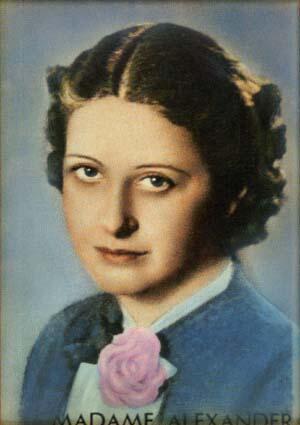
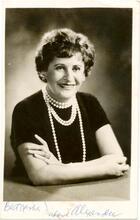
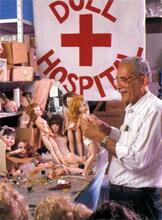
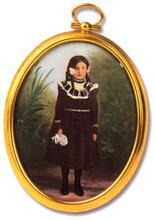
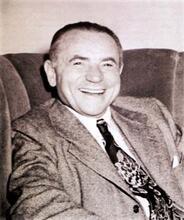
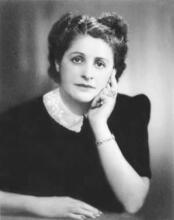
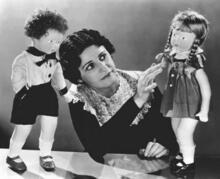
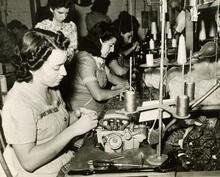
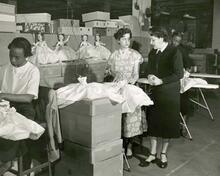
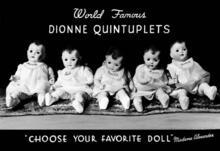
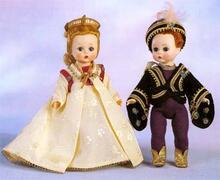
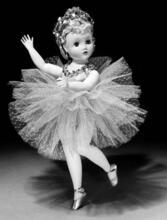
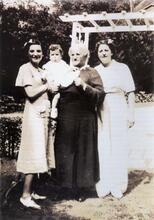

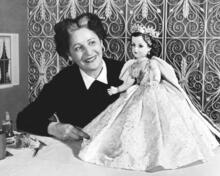
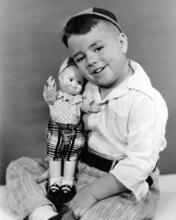


A truck driver,went to this doll store in k ate 90's to load up dolls.I waited on store steps,in the cold a man in tail and top hat scarf showed up to unlock store,Was this Maurice Alexander?I was so impressed,wish I could have had a look inside.A great memory.
There is a wonderful club for her! The Madame Alexander Doll Club treasures the artistry of her dolls. Its Mission Statement reads: "The Purpose of the Madame Alexander Doll Club is to study, research, discuss and write about Madame Alexander Dolls, to collect and preserve Madame Alexander dolls and to conduct any and all activities that will promote collection of Madame Alexander dolls and related items. See https://madc.online/
do you repair your dolls? I have one that has a cloth body that needs to be replaced. It was my daughters. We lost her in a tragic accident. I would love to have her favorite doll, Maria repaired as I consider it a heirloom and treasure. She loved her dolly so much when she was a child. My e-mail is grognet@frontier.com. Thank you.
In reply to <p>do you repair your dolls? by Beth Grognet
References for finding Madame Alexander doll repair may be found by searching for "madame alexander repair." For example, there is a doll hospital for Madame Alexander dolls called the T. L. C. Doll Hospital in Denver, Colorado. Their contact email is tlcdoll@aol.com. JWA hopes that you will be able to repair your beloved doll.